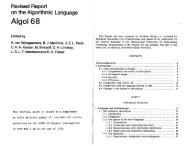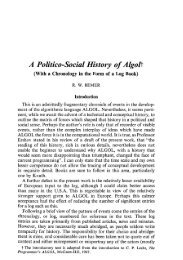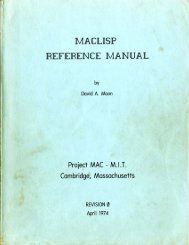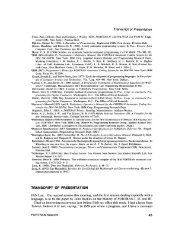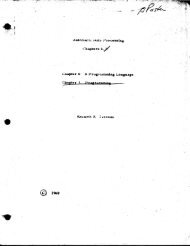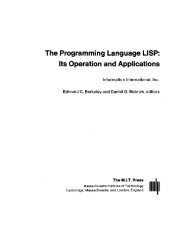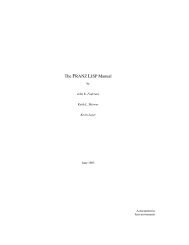LISP I Programmer's Manual - Software Preservation Group
LISP I Programmer's Manual - Software Preservation Group
LISP I Programmer's Manual - Software Preservation Group
You also want an ePaper? Increase the reach of your titles
YUMPU automatically turns print PDFs into web optimized ePapers that Google loves.
SET :Note:FLX*:CRD*:FIN:This card works the same way as TST except thatimmediately after all the triplets have been evaluatedthe state of the memory as it stands is read out ontotape 8 as the new "base" image for the memory. FutureI ITST cards will restore the memory to this new base"state. If more SET cards are used, the functions fol-I Ilowing them will be compounded into the base1' image.If an error occurs during the evaluation of a tripletin a SET the new base image for that SET is not writtenout on tape.The variable field (columns 12-72) for both SETand TST cards should contain the problem number, theprogrammer's number and name, and any other identificationdesired.The Flexowriter mode of operation (see Section5.3) is called into control.Control is returned from the Flexowriter back tothe card reader.The computer stops,Any other card, such as a SAP REM card, may be includedin a deck between a STOP card and the next direction card. Thecard w i l l be printed out but will have no other effect. Such acard in any other position in the deck will cause trouble.\Vhe FLX and CRD direction cards are not understood by the basic<strong>LISP</strong> system; only the <strong>LISP</strong>-flexo system can interpret them.




